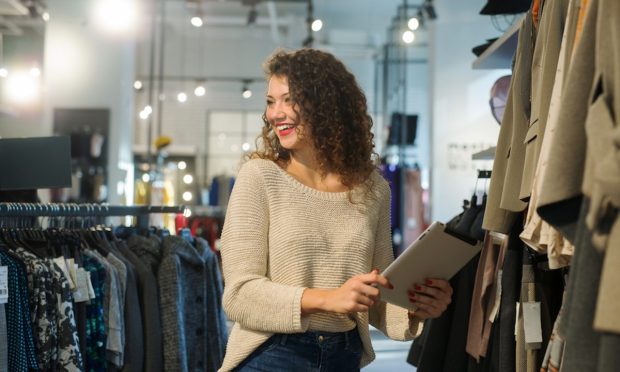Store Associates Turn To Content Creators As Retailers Embrace Social Commerce

Not too long ago, the role of a retail store associate was fairly straightforward: When a customer came into the store, employees were tasked with helping them complete their purchase, from finding the right items to scanning UPCs and sending the consumer on their way.
As retailers embrace an omnichannel approach, however, store associates are increasingly asked to engage digitally as well, whether it’s simply handling buy online, pick up in-store (BOPIS) orders or taking care of digital customer queries. Apple, for example, is testing a hybrid work-from-home option for retail employees, asking them to work some weeks in-store and other weeks from home handling online sales, customer service and technical support.
“I think what’s really shifted is a deeper understanding of how customers really are starting their shopping journey online and potentially finishing in store, or vice versa,” Adam Levene, founder of social commerce platform HERO, told PYMNTS in an interview.
According to PYMNTS’ Connected Economy research, 66 percent of highly connected consumers and 83 percent of moderately connected consumers purchase retail products online. Still, 54 percent of highly connected and 70 percent of moderately connected consumers are heading to physical stores to buy items.
See more: How 73M Highly Connected Consumers Are Pioneering The Connected Economy
HERO has given retailers the ability to connect store associates with online consumers since 2017 in an effort to make the shopping experience more interactive and human. In 2020, though, the pandemic pushed merchants to quickly adopt new technology to keep their businesses going, and Levene said HERO saw 300 percent growth.
“Instead of associates waiting for customers to come in the store, they open up the HERO app and suddenly they can be connected with shoppers on the website from across the world,” Levene explained. “That was a total shift and a new behavior for those associates, but one that gave them so many more earning opportunities, because they actually get credit for the online sales they’re making.”
A Social Connection
HERO also recently launched a “one-to-many” feature where store associates can create a 15-second video story with a product recommendation that appears on the retailer’s website. “What that does is essentially turn stores into studios and store associates into content creators,” Levene said. “I think this is a really exciting space.”
Related news: Social Commerce Battle Heating Up Just In Time For Summer
Social commerce has been a hot topic for months, as COVID-19 drove everyone inside and retailers looked for ways to meet consumers where they were already spending their time. PYMNTS research finds that 44 percent of consumers who are highly connected in their social engagement are also highly connected shoppers.
Social media networks, including Facebook, Snapchat and Pinterest, are already getting in on the game, with Twitter also mulling and experimenting with the idea. Additionally, fashion apparel retailer Express recently announced a new social commerce program, and platforms such as Poshmark and Verishop have launched mini shops within Snapchat to lure Gen Z.
“That’s how today’s consumer wants to shop,” Levene said. “So bringing video to eCommerce and bringing videos to the actual online stores really helps the merchants level up their online store.”
Hitching a Ride With BNPL
After being acquired by buy now, pay later (BNPL) platform Klarna last month, Levene said the company will be able to scale “so much faster” with the ability to reach the 250,000 merchants and brands that Klarna works with.
Read more: Klarna Acquires HERO To Enhance Social Shopping
“It’s just a very, very fast-growing business,” Levene said. “It’s such a rocket ship company.”
Given the BNPL developments over the past several months, it’s easy to see why the acquisition was attractive to HERO. Major payments players, including Visa, Mastercard and Discover, are all entering the BNPL space, and last week, Square said it plans to acquire Afterpay for $29 billion. Klarna itself has also been on a tear of partnering with high-profile retail brands, including Petco, YOOX NET-A-PORTER, and the owners of Aéropostale, Brooks Brothers, Nine West and Nautica.
PYMNTS, in collaboration with Sezzle, found that 36 percent of U.S. adults shopping online have used or are interested in using BNPL, and 29 million U.S. consumers have used BNPL in the last 12 months.
Readers also liked: Financially Underserved Consumers 3X More Likely To Use BNPL Options At Checkout
“Many merchants … were telling us how valuable buy now, pay later services — and in particular, Klarna — was for them, because it really gives customers a whole new way to buy and have a better, smoother checkout experience,” Levene said.
